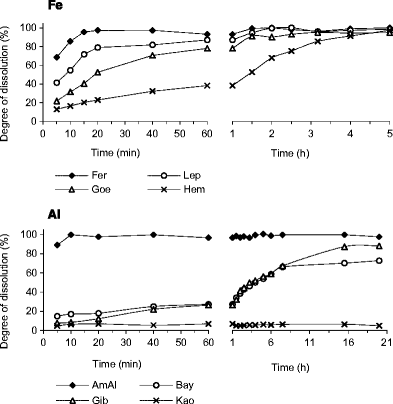 Purpose
Purpose
Numerous extraction procedures have been used to characterize phosphorus (P) forms bound to iron (Fe) and aluminum (Al) (hydr)oxides in soils and sediments. We propose a simple modification of a widely used P fractionation method that more precisely quantifies P associated with active Fe and Al (hydr)oxides, which are mostly responsible for P binding and its potential release to water.
Materials and methods
We modified the original sequential extraction [H2O, bicarbonate-dithionite (BD), NaOH, HCl] by adding short (10-min) extractions with BD and NaOH prior to the respective original steps. The method was verified using (1) dissolution kinetics of Fe and Al minerals of different crystallinity and (2) liberation of P, Fe, and Al from natural samples of soils, sediments, and settling seston, containing different proportions of amorphous and crystalline Fe and Al (hydr)oxides. Extracted P was analyzed for reactive and non-reactive (mostly organic) P forms.
Results and discussion
Both mineral and organic P forms associated with Fe and Al were almost completely liberated from the samples during the 10-min BD and NaOH extractions, respectively. Prolonged extraction period caused a partial P re-adsorption onto the solid phase in some samples. The 10-min extractions were able to dissolve amorphous Fe and Al (hydr)oxides (ferrihydrite, amorphous AlOOH) and a portion of more crystalline Fe and Al minerals, approximately related to their surface area.
Conclusions
The additional short extraction steps allow a rapid and more precise quantification of P associated with active Al and Fe (hydr)oxides, and better estimate the amounts of these Fe and Al forms in soils and sediments than the original method. Our simple modification of the traditional method thus provides new and useful information for environmental studies focused on potential P mobility across a solid phase-water interface.
Keywords: aluminium; iron; phosphorus; sediment; sequential fractionation; soil
